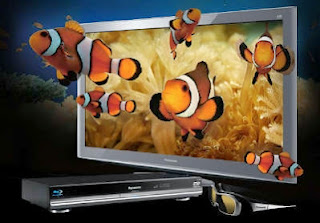This is Sales 101, folks, and the electronics vendor is doing whatever is necessary to get the TV to catch your eye and make a sale. Now, when you bring the TV home and settle it into your 'perfect spot' in your home, there are a few things to keep in mind so that you may optimize the viewing experience and ensure that your TV is set up for viewing for hours at a time, without creating unnecessary eye-strain (where perhaps the picture is not sharp enough) or viewer fatigue (where perhaps the picture is too bright).
First of all, if you own an HD TV (not a clunky analog 'Tube TV' - remember those?), by definition it is producing and displaying a digital picture. What you will find with most quality digital TV's is that the optimal picture adjustment settings can be quite different from the ones you may have used when you owned an analog tube TV.
 |
Getting the best TV picture
|
Here are some of the most significant settings to adjust and why...if your TV picture doesn't look much better or 'way-tuned-up' after applying them, then either you have a TV/brand that is way different from most of the other HDTV's on the market, or you are just a minor tweak or 2 away from TV picture nirvana and need to play a little trial and error until you get the picture that you like.
1) Contrast - slide it all the way to the right - as mentioned earlier, you have a digital picture and 100% contrast ratio should only make the picture clearer and more defined.
2) Brightness - since you have maxed the Contrast setting (above), you can now lower the Brightness to 50%. You are now on your way to getting an excellent picture that is not 'showroom bright' or overly 'jacked-up'.
3) Color - adjust to somewhere between 50% and 40%. Again, the factory settings for TV's generally overload the color settings. You'll find that you gain more picture clarity by lowering the color setting and eliminating the color wash that may appear on some stations. You may notice that people's faces and flesh tones look clearer and more natural after applying this adjustment.
4) Tone or Tint - leave it where it usually defaults, right in the middle. Again, you have an HD TV which has built in circuitry to handle balancing color tone and blending, and we do not need to override it to give it more of a certain tone.
5) Sharpness - put sharpness at 50%, then add just one more 'tick' to it, for example, adjust it to 51% or whatever units your TV uses to move one step or bar on the adjustment. Normally this gives the picture just the subtle focus adjustment that it needs. Again, you have a clean, digital picture and should not need to sharpen it excessively.
6) Noise Reduction - turn this off. As long as you have a good quality cable/satellite/DVD signal or other quality feed coming to the TV, turning Noise Reduction 'on' will only soften and dull your picture, removing necessary detail.
7) Color Temperature - cool(blues), medium(standard) or warm(reds). The viewer may have their own personal preferences for this setting, but we have found in our testing that we prefer the Cool setting. Many of the top brands (like Toshiba, Sony, Samsung, etc.) will already tend towards accentuating the warm setting in their design, so we find using the Cool setting balances out the overall picture.
Give it a try, and happy viewing!
(Let's also browse some HDTVs , or some Movies(DVD's, etc.) to help maximize our viewing experience!)

No comments:
Post a Comment